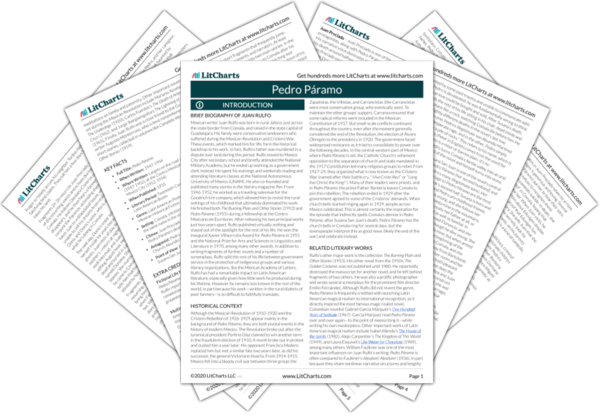Readers can choose to see the conflation between “Father” Rentería and Bartolomé, the man who purports to be Susana’s father, more or less literally. On the surface, it appears that this confusion just points out the way that Rentería has a kind of patriarchal authority over the people in Comala. But it could also be seen as a sign of something more sinister: Father Rentería could be Susana’s real father, which would explain her refusal to recognize Bartolomé as such. Notably, even though the last scene focused on Bartolomé’s death, this one centers two others: the death of Susana’s first husband, Florencio, which happened long before Susana went to Comala, and that of Father Rentería, which happens much later, after Susana’s own death. Accordingly, as it mixes the past, present, and future, this passage more generally represents Susana’s insistence on facing death alone, without some male figure trying to control her.
